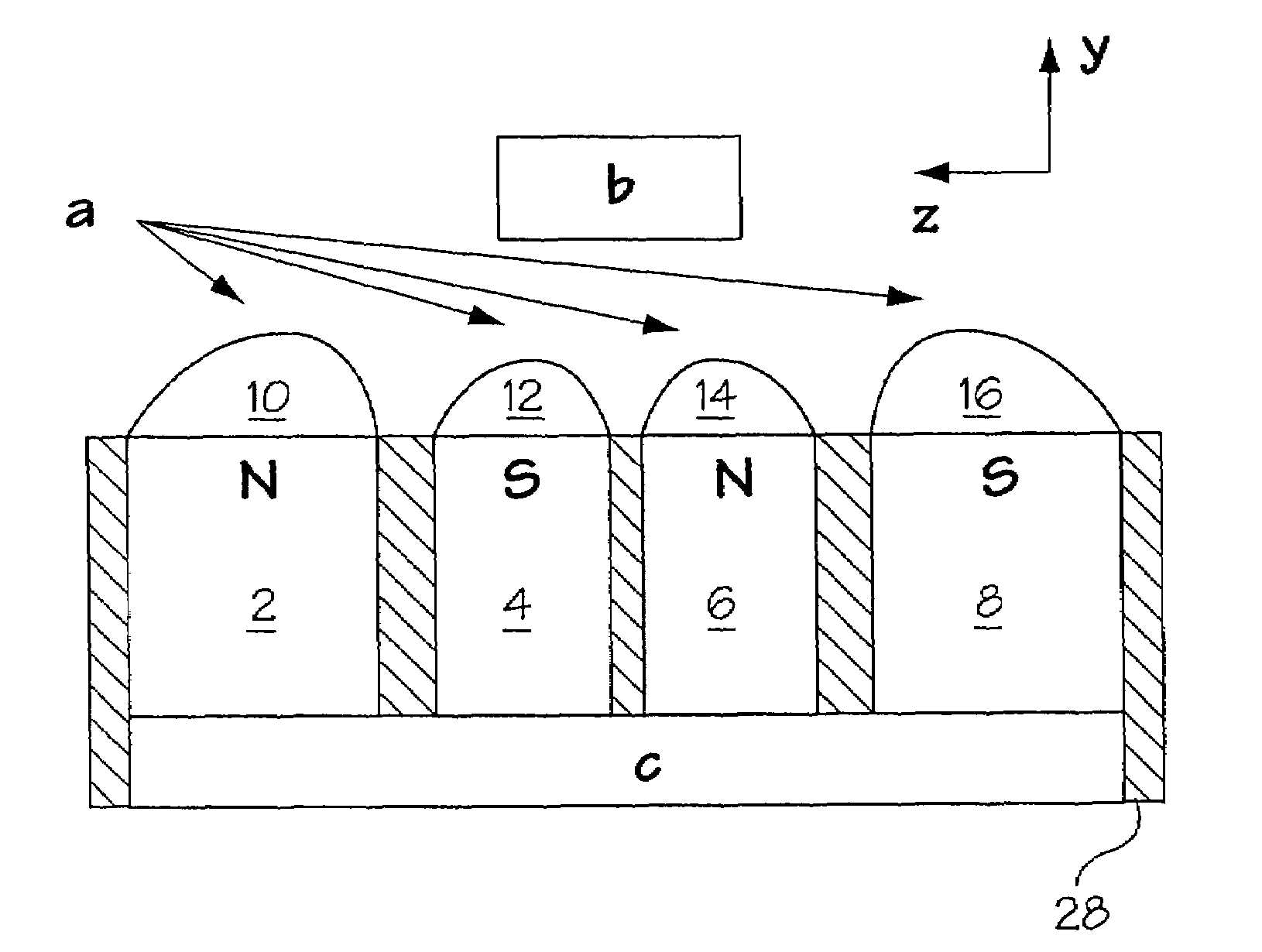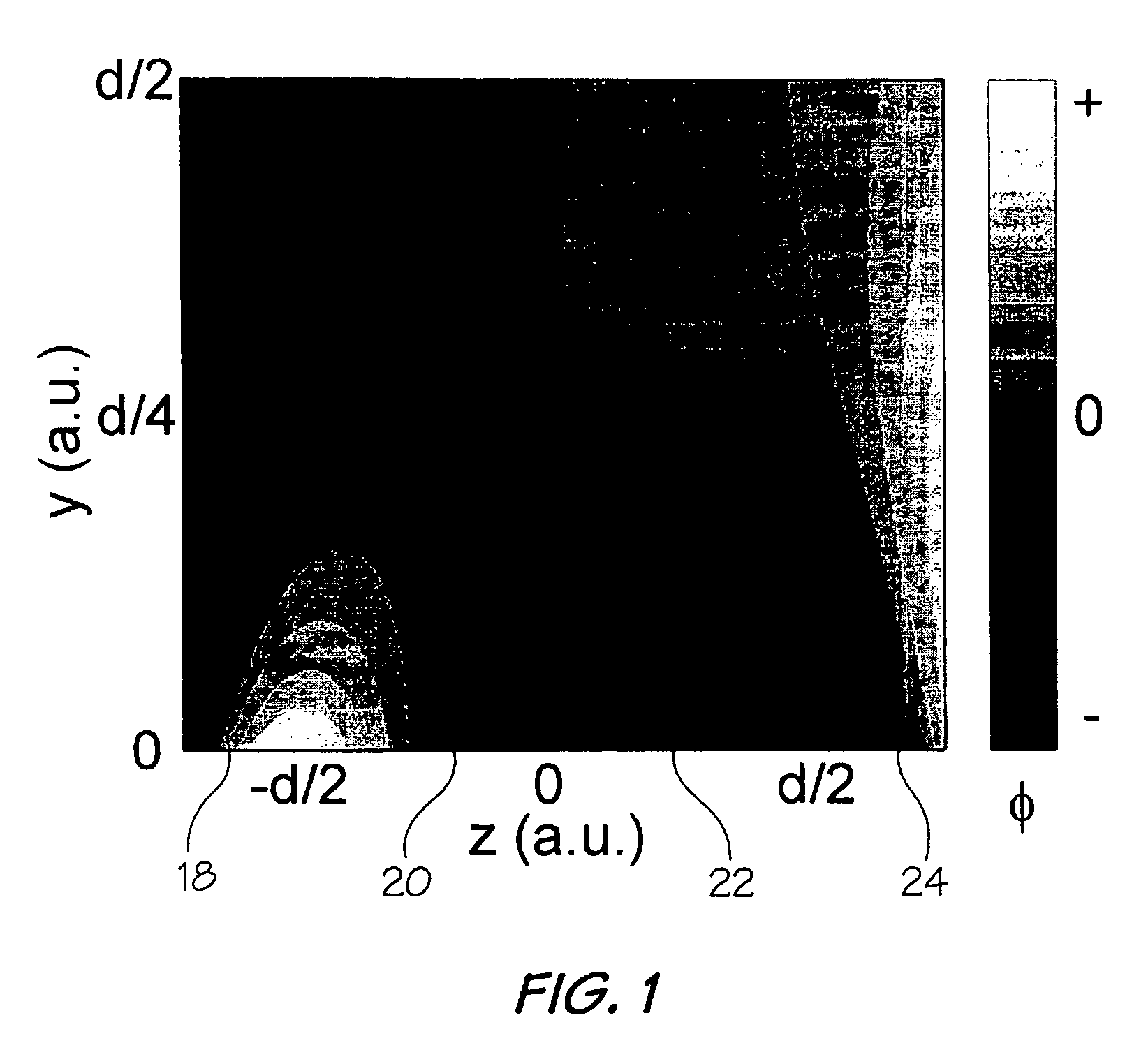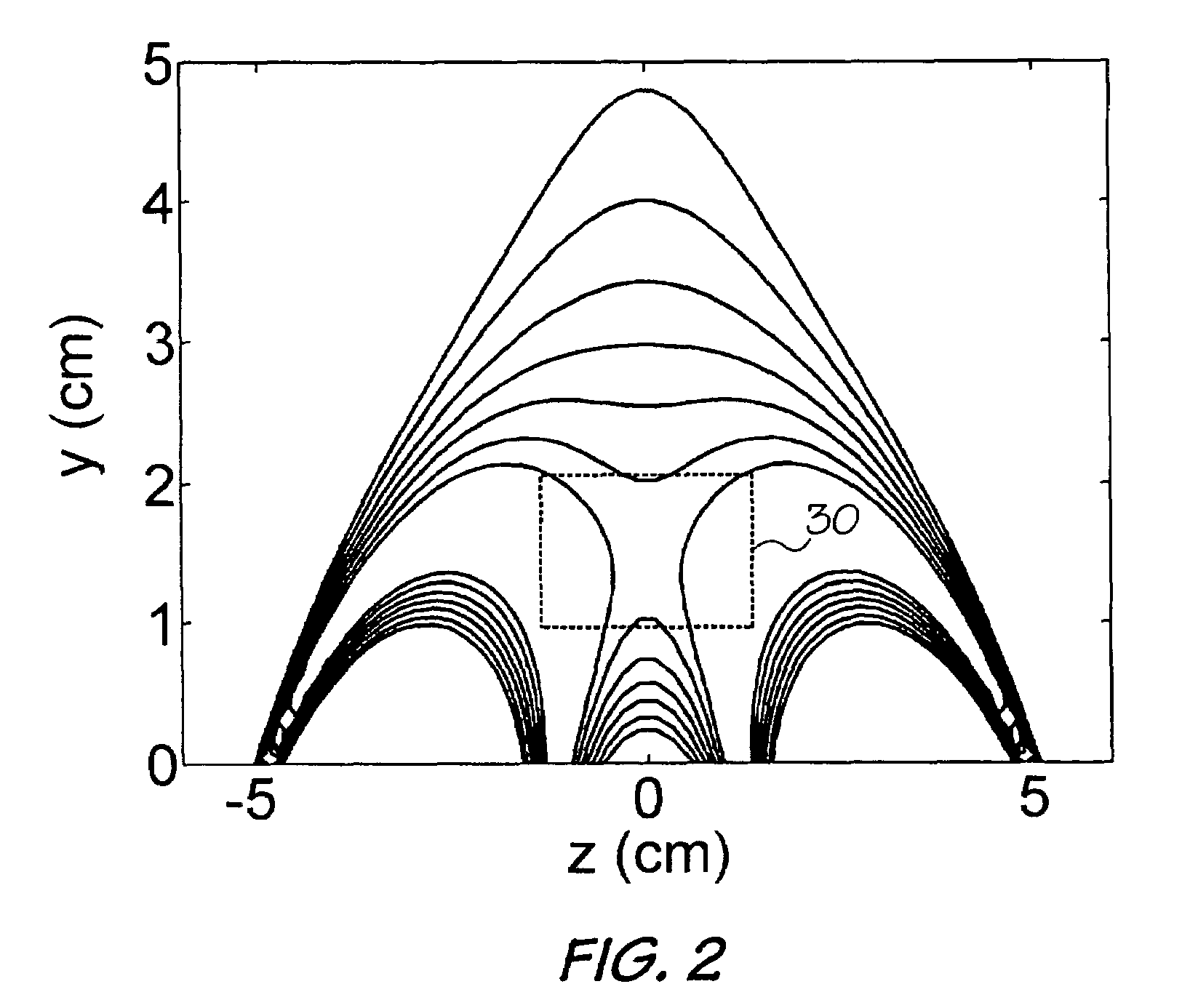Sensor and magnetic field apparatus suitable for use in for unilateral nuclear magnetic resonance and method for making same
a magnetic field and sensor technology, applied in the field of nuclear magnetic resonance (nmr) experiments, can solve the problems of short signal lifetime, limited sample range that can be examined, low snr measurement, etc., and achieve the effect of high permeability and material permeability
- Summary
- Abstract
- Description
- Claims
- Application Information
AI Technical Summary
Benefits of technology
Problems solved by technology
Method used
Image
Examples
example
[0115]In the prototype GROUSE array shown in FIG. 16, the following design criteria was used:[0116]B0 normal to magnet surface;[0117]Gradient, G=˜30-50 Gauss / cm;[0118]Sensitive Spot 2.5 cm above magnet, pole pieces must fit within this region; and[0119]Gradient Linearity:
[0120]∂2B→0∂y2y=2.5=0
[0121]It will be understood that the methods of the invention can be used to design and construct a variety of unilateral magnet arrays and families of arrays including (1) a single magnet and single pole piece, which forms a linear gradient through the sensitive spot, (2) a four magnet array with four pole pieces which has a uniform sensitive spot and (3) a four magnet array with a uniform sensitive spot which lacks pole pieces entirely.
PUM
 Login to View More
Login to View More Abstract
Description
Claims
Application Information
 Login to View More
Login to View More - R&D
- Intellectual Property
- Life Sciences
- Materials
- Tech Scout
- Unparalleled Data Quality
- Higher Quality Content
- 60% Fewer Hallucinations
Browse by: Latest US Patents, China's latest patents, Technical Efficacy Thesaurus, Application Domain, Technology Topic, Popular Technical Reports.
© 2025 PatSnap. All rights reserved.Legal|Privacy policy|Modern Slavery Act Transparency Statement|Sitemap|About US| Contact US: help@patsnap.com



